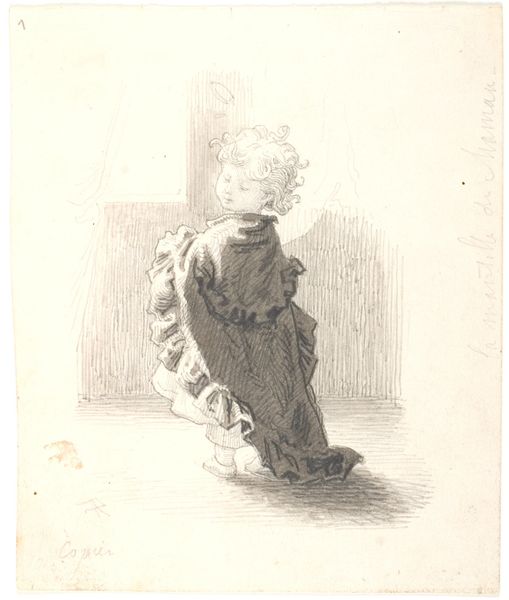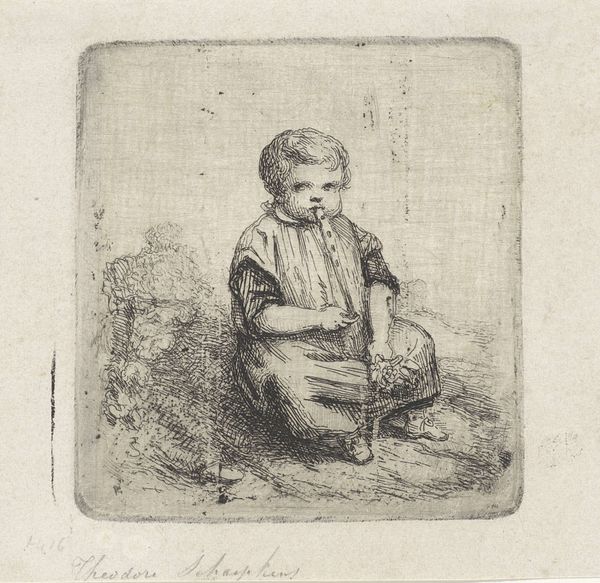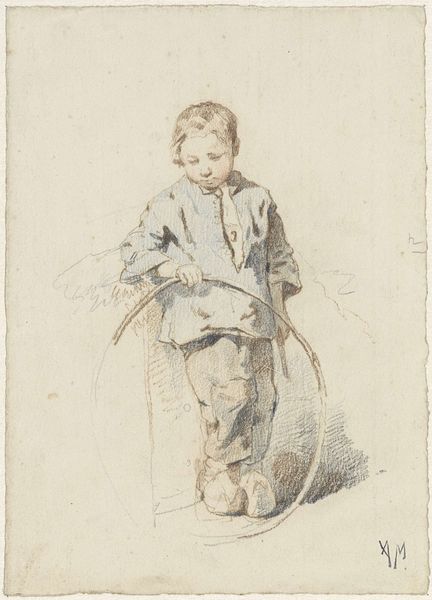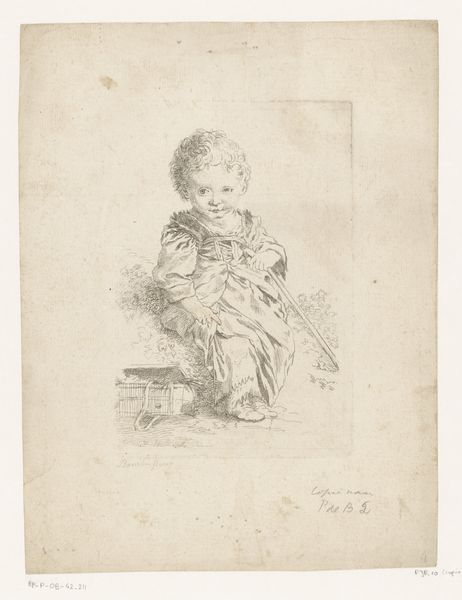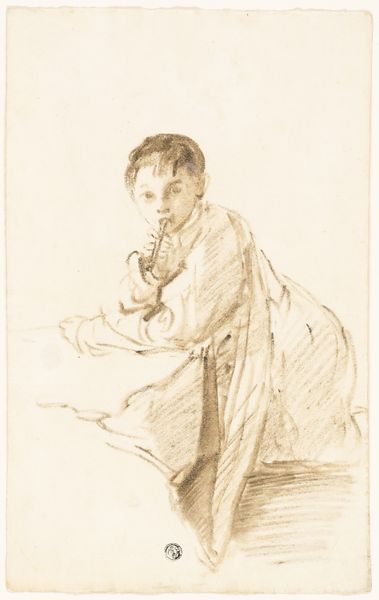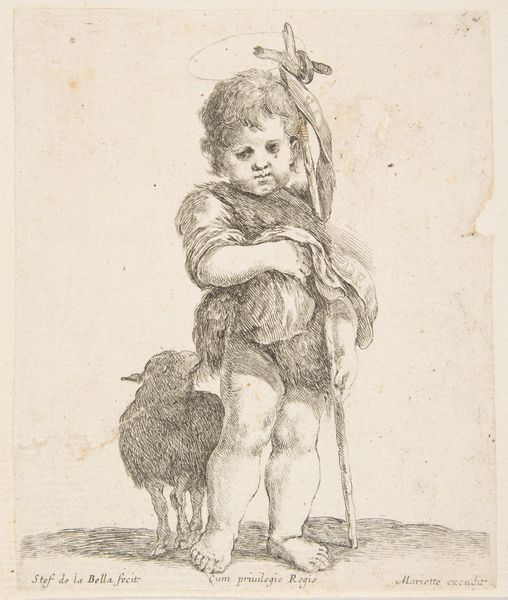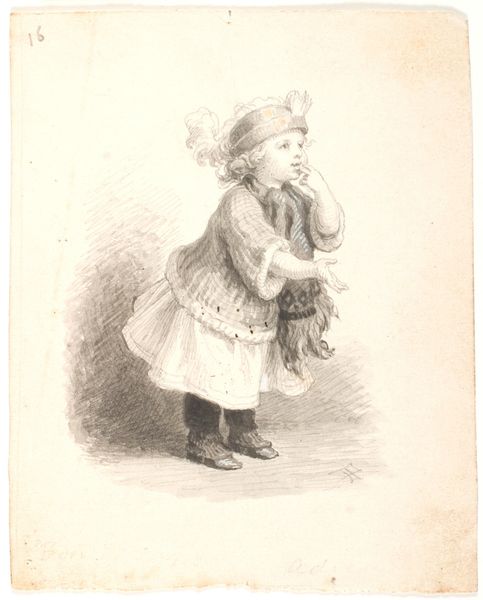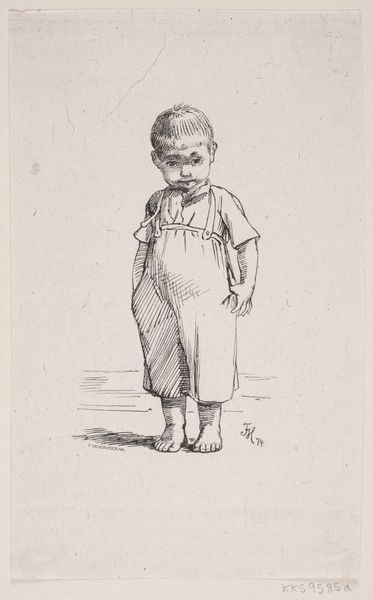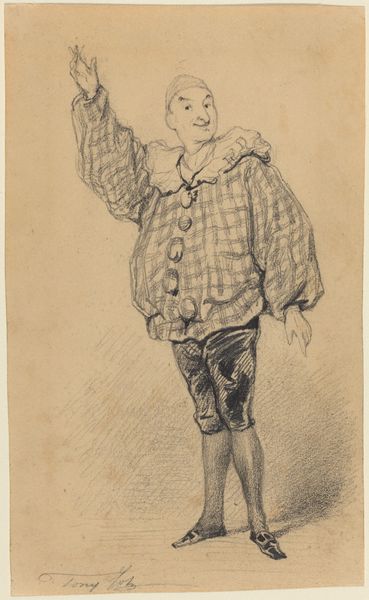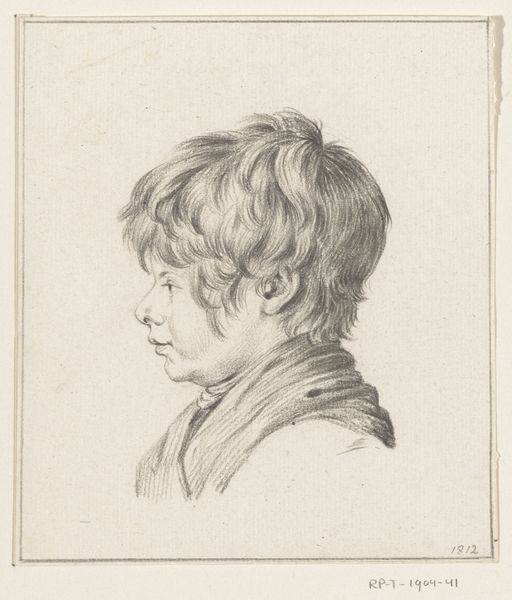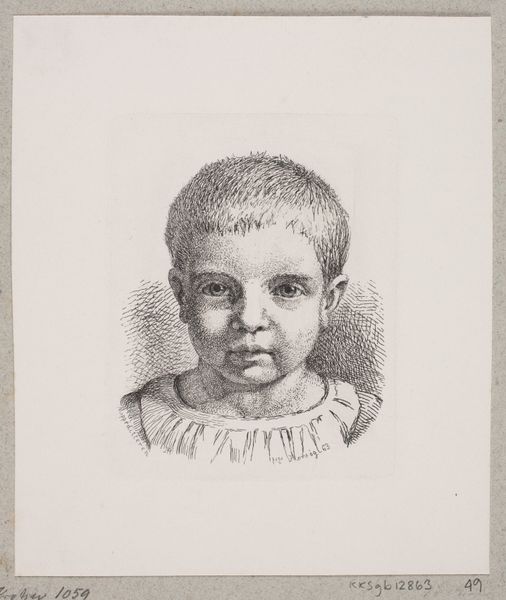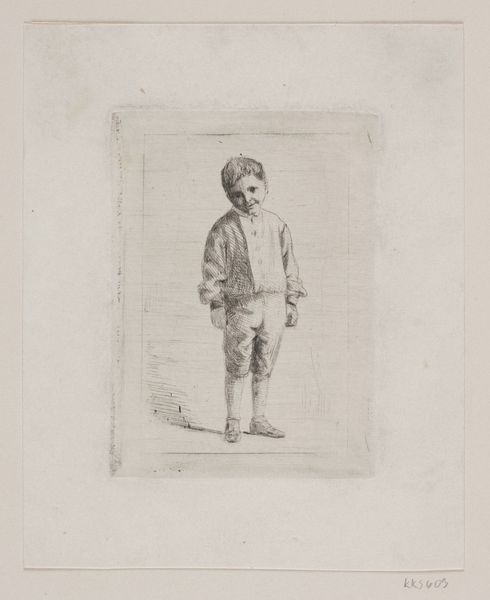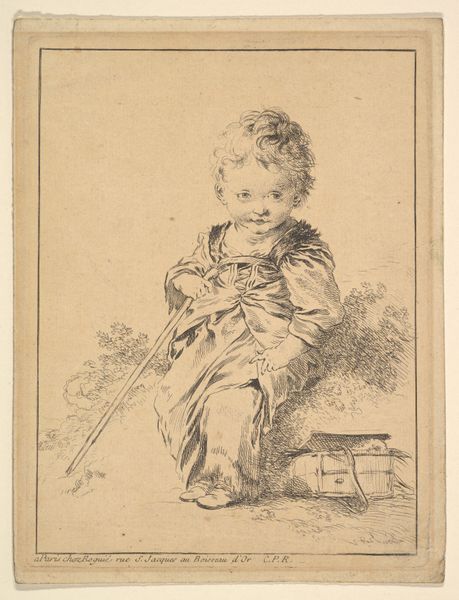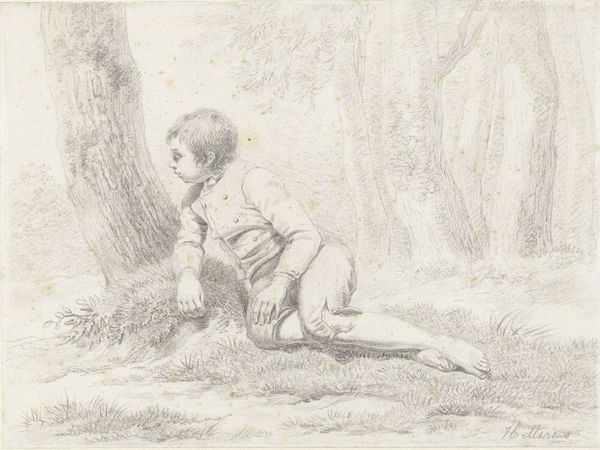
Portret van George Jean Guillaume de Block-Loor als kind 1860
0:00
0:00
eugenefrancoisdeblock
Rijksmuseum
drawing, pencil
#
portrait
#
pencil drawn
#
drawing
#
pencil sketch
#
pencil
#
realism
Dimensions: height 242 mm, width 141 mm
Copyright: Rijks Museum: Open Domain
Curator: Standing before us, we have "Portret van George Jean Guillaume de Block-Loor als kind," a pencil drawing from 1860 by Eugène François de Block, housed here at the Rijksmuseum. Editor: It's immediately striking, this quiet stillness of the child. His folded hands and averted gaze project a thoughtfulness that seems beyond his years. Curator: It's fascinating to consider how portraiture, even in a relatively informal medium like a pencil drawing, functioned as a marker of social standing. De Block's rendering captures the posture of polite society, reflecting the values instilled in children of that era. Editor: Absolutely. The boy’s hands clasped together almost mirror an unspoken prayer or promise. This image holds religious or symbolic gravity, echoing the innocence often assigned to childhood in Western art. His averted gaze is poignant; the suggestion that something important exists outside our view adds an emotional complexity. Curator: What I find intriguing is how the artwork functions as a time capsule, offering us a glimpse into the cultural norms and familial aspirations surrounding childhood in the mid-19th century. It makes one wonder about the relationship between artist and subject, about their individual motivations for creating this artwork. Editor: Agreed. The deliberate act of portraiture elevates this child beyond mere documentation; he becomes an emblem of hopes, dreams, and generational legacy. The very choice of a realistic style amplifies this, focusing on rendering the texture and detail that evoke human character, even in so young a person. It implies his life had profound potential. Curator: Ultimately, this artwork offers a compelling glimpse into a past shaped by social codes and cultural beliefs. It's more than just a likeness; it's a cultural artifact. Editor: And within those lines, the very essence of childhood vulnerability, rendered so subtly. It stirs up something empathetic, even now, doesn't it?
Comments
No comments
Be the first to comment and join the conversation on the ultimate creative platform.
